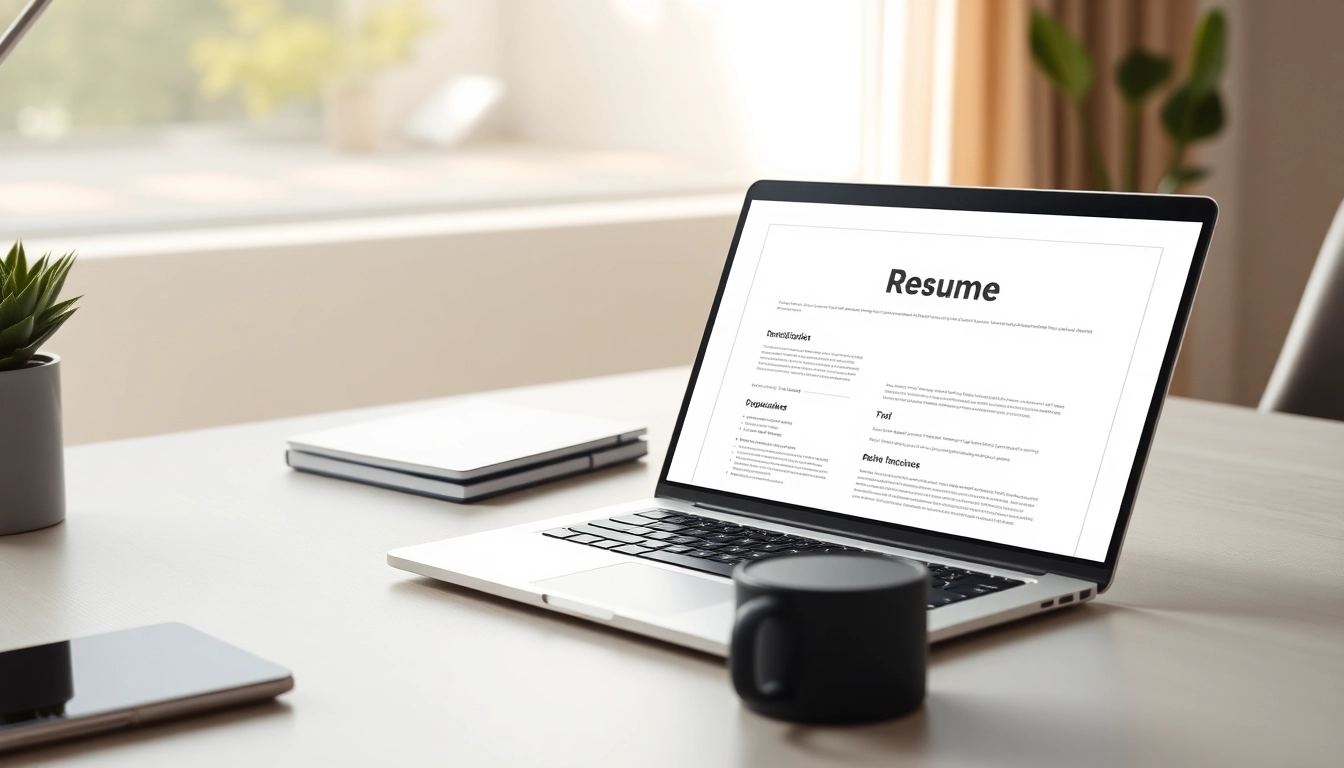Maximizing Your Career Prospects with Professional Resume Templates in 2025
In today’s fiercely competitive job market, the importance of a well-crafted resume cannot be overstated. With millions vying for the same positions, your resume is your first opportunity to make a compelling impression. The backbone of a compelling application lies in utilizing professional resume templates that are designed to highlight your strengths, align with industry standards, and pass through applicant tracking systems (ATS). As we step into 2025, mastering the art of using advanced, industry-specific resume templates becomes crucial to stand out and secure your dream role.
Why Resume Templates Matter in Today’s Job Market
Resume templates serve as foundational frameworks that streamline the process of building a polished, effective CV. They ensure consistency, highlight critical sections, and facilitate readability—all essential elements that catch the eye of recruiters within the pivotal six seconds they usually spend reviewing each application. In 2025, where digital application processes dominate, ATS-friendly templates have become indispensable. These templates incorporate industry-specific keywords, standardized formats, and visual clarity, drastically increasing your chances of getting noticed.
According to recent industry insights, over 75% of large organizations utilize applicant tracking systems. Without an ATS-optimized template, even highly qualified candidates risk being filtered out before reaching human eyes. A professional template aligns your experience with the algorithm’s expectations, thereby increasing your interview probability significantly.
Key Features of Effective Resume Templates in 2025
ATS Compatibility and Keyword Optimization
Modern templates are designed to seamlessly integrate industry-specific keywords, making it easier for ATS software to identify your relevant skills and experiences. Incorporate keywords naturally within your summaries, skills, and achievements sections to ensure your resume ranks higher in ATS scans.
Visual Hierarchy and Readability
Effective templates organize information logically, with clear headings, bullet points, and strategic white space. This formatting allows recruiters to quickly scan your resume and extract pertinent information, enhancing your chances for an interview.
Customization Flexibility
Templates should be adaptable to various professions and career levels, from entry-level to executive. Dynamic templates allow you to tailor the design, color scheme, and layout while maintaining professionalism and ATS compatibility.
Integration with Online Presence
Modern resume templates also facilitate easy linking to your online profiles—LinkedIn, personal websites, or portfolios—creating a comprehensive digital professional image.
How a Well-Designed Template Enhances Your Online Presence
Your resume is a digital asset that interacts with your online reputation. An effective template not only impresses recruiters but also harmonizes with your social media profiles, particularly LinkedIn and Twitter. Consistent branding, using the same professional photo, headline, and summary, reinforces your personal brand. Additionally, ATS-compatible templates can make your online profiles more discoverable, increasing your visibility across multiple job portals like Naukri, Monster, and Indeed.
Leveraging templates tailored for online platforms ensures your profile ranks higher in searches, and your resume seamlessly integrates with your digital persona. Including URLs to your professional profiles within the template enhances credibility and accessibility for recruiters scrutinizing your digital footprint.
Choosing the Right Professional Resume Template for Your Industry
Industry-Specific Templates That Get Noticed by HR
Selecting a template aligned with your industry is essential. For instance, creative fields like marketing or design benefit from visually engaging templates with color accents and infographics. Conversely, corporate roles such as finance or law demand clean, minimalist formats prioritizing clarity and professionalism. Websites like Canva, ResumeBuilder, and Hloom offer diverse options tailored for sectors ranging from tech to academia.
Customizing Templates to Reflect Your Personal Brand
Your resume should resonate with your unique identity. Incorporate personalized elements—color schemes, font choices, and layout styles—that mirror your professional persona. Ensure that your personal branding remains consistent across your social media profiles and LinkedIn presence for stronger recognition.
Balancing Creativity and Professionalism
While it’s tempting to experiment with bold designs, maintaining a balance is crucial. Overly elaborate templates can distract from your core message. Opt for templates that combine visual appeal with readability, ensuring a professional appearance that’s ATS-friendly and industry-appropriate.
Step-by-Step Guide to Creating Your Perfect Resume Using Templates
Gathering Your Career Information and Selecting a Template
Begin by compiling your career milestones, achievements, skills, education, and certifications. Next, assess your target industry and role to choose a template that complements your professional profile. Use platforms like MaxeCV or Canva to explore customizable options that suit your needs.
Customizing Content: Keywords, Achievements, and Formatting
Tailor your content to include relevant keywords specific to your industry—e.g., “project management,” “data analysis,” or “digital marketing.” Highlight quantifiable achievements, such as “increased sales revenue by 20%” or “reduced processing time by 30%.” Pay attention to formatting consistency, font size, and alignment to ensure clarity.
Finalizing and Optimizing for Applicant Tracking Systems
Before submitting, ensure your resume is optimized for ATS by testing it through online tools. Keep file formats compatible (preferably PDF or DOCX), avoid graphics or charts unless ATS-friendly, and verify that all keywords are embedded naturally within your resume content.
Tips for Upgrading Old Resumes with Modern Templates
When and Why to Refresh Your Resume Design in 2025
Review your resume biannually or when considering a career move. Updating your design keeps your application modern, professional, and ATS-compatible, reflecting current industry standards and personal growth.
Transforming Basic Content into a Visual Impact
Revamp textual content into visually engaging formats—use icons for skills, incorporate subtle color accents for sections, and add infographics for achievements to capture the reviewer’s attention quickly.
Common Mistakes to Avoid When Applying New Templates
Ensure your dynamic design does not compromise clarity. Avoid clutter, excessive colors, or fonts that hinder readability. Always test the template with ATS tools to confirm compatibility.
Measuring Success and Refining Your Resume Strategy
Tracking Interview Calls and Feedback
Monitor response rates after applying with different templates. Use feedback to identify what design and content elements trigger positive responses.
Making Data-Driven Adjustments to Your Resume
Analyze application metrics—such as response time, interview success rate, and recruiter comments—to refine your resume format, keywords, and content for optimal results.
Leveraging Feedback from Professionals and Recruiters
Seek expert opinions and incorporate constructive feedback into your resume updates, ensuring continuous improvement aligned with market trends.

